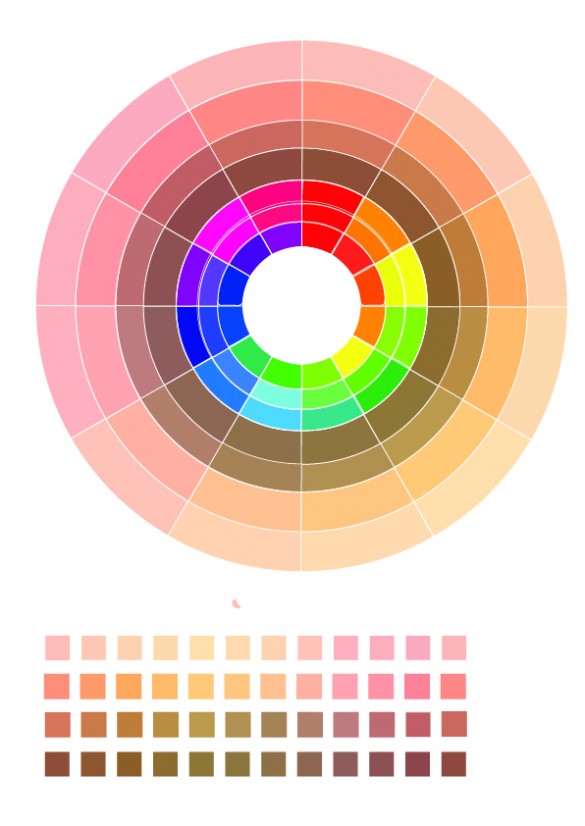
Makeup is an art form that allows individuals to express their creativity and enhance their natural beauty. Among the many elements that contribute to a flawless makeup look, understanding color theory is essential. Color theory forms the foundation for choosing the right shades, creating harmonious combinations, and achieving stunning makeup effects. Mastering color theory for makeup empowers you to create stunning looks, enhance your natural beauty, and express your creativity. By understanding the color wheel, creating harmonious color combinations, and considering undertones, you can elevate your beauty palette and achieve a flawless makeup application. Remember, makeup is an art, and exploring different color combinations and techniques is part of the fun. So, embrace your creativity, experiment with colors, and let your imagination run wild as you embark on your makeup journey.
At the heart of color theory lies the color wheel, a visual representation of colors arranged in a circular format. The color wheel is divided into primary, secondary, and tertiary colors, each playing a significant role in makeup application.
Primary Colors: The primary colors are red, blue, and yellow. These colors cannot be created by mixing other colors and are the building blocks of all other hues.
Secondary Colors: Secondary colors are created by mixing equal parts of two primary colors. They include orange (red + yellow), green (blue + yellow), and violet (blue + red).
Tertiary Colors: Tertiary colors are achieved by mixing a primary color with a neighboring secondary color. For example, red-orange, blue-green, and yellow-green.
Once you understand the basic color wheel, you can use it to create harmonious color combinations for your makeup looks. Here are a few popular techniques:
Complementary Colors: Complementary colors are located opposite each other on the color wheel, such as red and green, blue and orange, or yellow and purple. Using complementary colors can create striking contrasts and make certain features pop. For example, pairing a red lip color with green eyeshadow can create a captivating look.
Analogous Colors: Analogous colors are located next to each other on the color wheel, such as blue and green, or orange and red. These colors create a harmonious and cohesive look when used together. Using analogous shades for eyeshadow or blush can result in a soft and blended effect.
Monochromatic Colors: Monochromatic looks involve using different shades and tones of a single color. This technique can create a sophisticated and cohesive appearance. For instance, using various shades of pink for eyes, cheeks, and lips can achieve a monochromatic makeup look.
When it comes to foundation and concealer, understanding undertones is crucial for achieving a seamless match with your skin. Undertones refer to the subtle hues that exist beneath the surface of your skin and are categorized into three main categories:
Warm Undertones: Warm undertones have a yellow, peach, or golden hue. Individuals with warm undertones typically suit shades with yellow or golden undertones.
Cool Undertones: Cool undertones have a pink, red, or bluish hue. Those with cool undertones often find shades with pink or blue undertones most flattering.
Neutral Undertones: Neutral undertones have a balanced mixture of warm and cool tones. People with neutral undertones can wear a wide range of shades, as they are neither overly warm nor cool.
By determining your undertone, you can choose foundation, concealer, and other complexion products that will seamlessly blend with your skin, providing a natural and flattering appearance.While color theory provides guidelines for makeup application, it's important to remember that makeup is an art form that allows for personal expression and experimentation. Don't be afraid to step outside the conventional color combinations and try new and unexpected combinations. Through trial and error, you may discover unique looks that suit your features and reflect your personality.
also read - The Pitfalls of Excessive Skin Care: Understanding the Unintended Consequences
Tips and Tricks: How to Make Your Makeup Last All Day
The Enigmatic Color-Changing Shivling at Achaleshwar Mahadev Temple